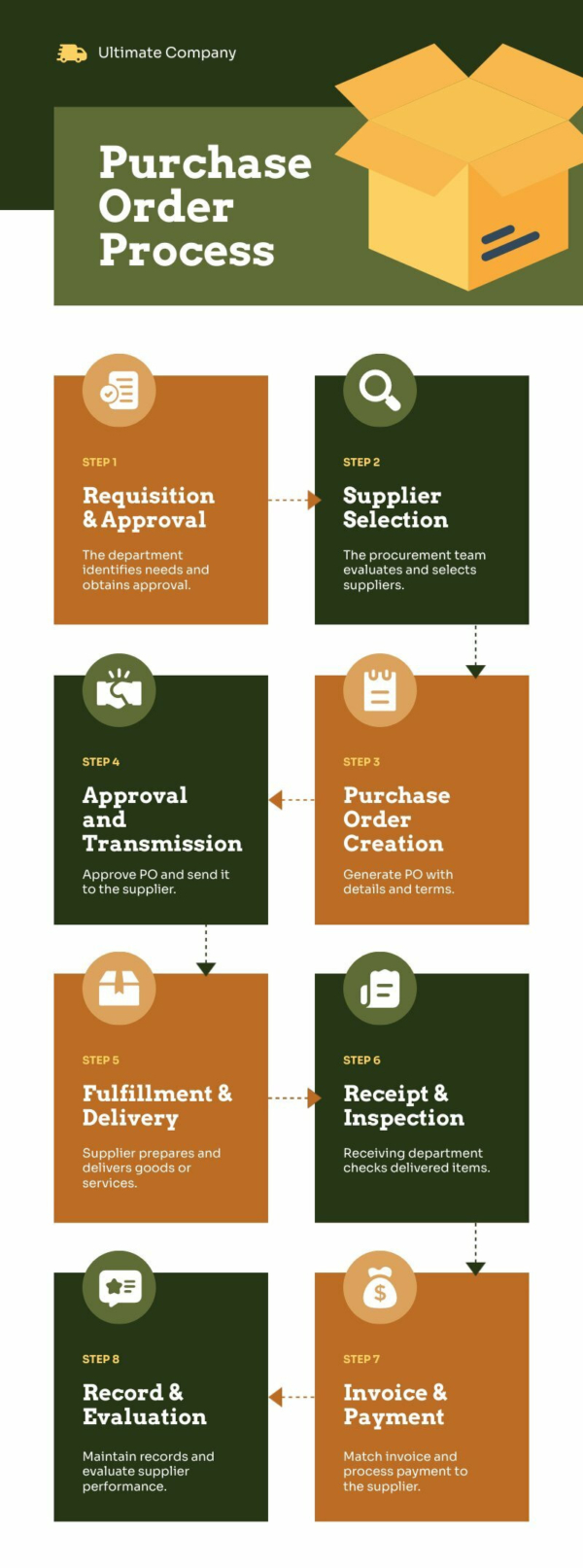
Purchasing Cycle
Diagrams
Edit for freeYou'll be asked to log in or sign up for a free Piktochart account first.
The purchasing cycle is a fundamental process in every organization, ensuring the smooth acquisition of goods and services. It involves a series of steps that begin with identifying the need for a product or service and end with receiving those items. Let's break down this essential process without jargon: 1. Identify Needs: It all starts when someone in the organization realizes a need for something, whether it's office supplies, equipment, or even services like software. This step kicks off the purchasing cycle. 2. Create a Purchase Requisition: Once the need is identified, a formal request is made, known as a purchase requisition. This document outlines what's needed and why. 3. Review and Approval: The relevant authorities then review and approve the purchase requisition. This step ensures the request aligns with the organization's budget and objectives. 4. Supplier Selection: With the approved requisition, the next step is finding a suitable supplier. When choosing suppliers, organizations often consider factors like quality, cost, and delivery time. 5. Request for Quotes (RFQ): Suppliers are contacted, and a request for quotes (RFQ) is sent out. This document asks suppliers to provide details on pricing and other terms. 6. Evaluate Quotes: They're carefully evaluated once the quotes come in. This evaluation considers factors like price, quality, and supplier reputation. 7. Place the Order: After evaluating the quotes, the organization selects the best supplier and places an order. This order outlines what's being purchased and in what quantity. 8. Delivery and Inspection: When the supplier delivers the goods or services, they are inspected to ensure they meet the specifications outlined in the order. 9. Invoice and Payment: The supplier sends an invoice to the organization after inspection. The invoice is reviewed, and if everything checks out, payment is made. 10. Record Keeping: Throughout the purchasing cycle, records are kept of all transactions. Helps with tracking expenses and compliance with regulations. 11. Feedback and Improvement: Organizations often seek feedback from all parties to improve the purchasing process continuously. In conclusion, the purchasing cycle is the backbone of acquiring the necessary goods and services for an organization to operate efficiently. By following these simplified steps, organizations can ensure that their purchasing processes are transparent, cost-effective, and compliant with their needs and objectives.
Available File Type
Customization
100% customizable
Tags
More Templates Like This
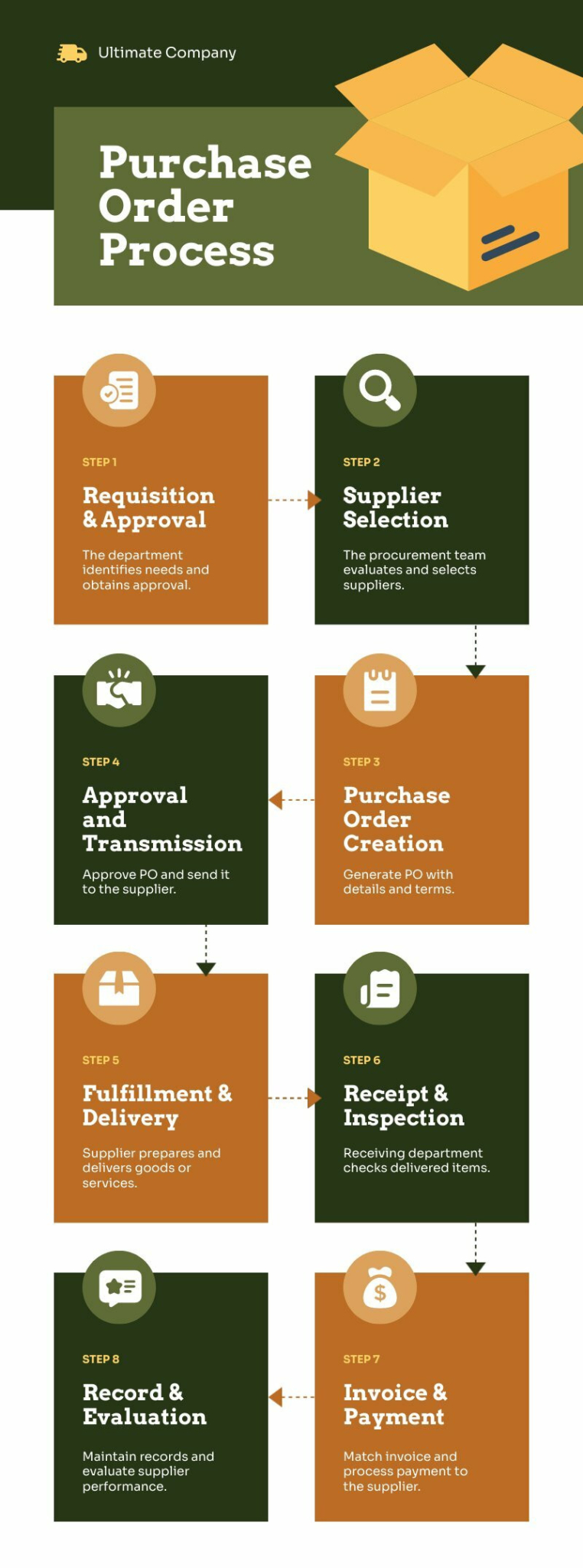 Diagrams
Purchasing Cycle
Diagrams
Purchasing Cycle
 Diagrams
Insurance and Claim Process
Diagrams
Insurance and Claim Process
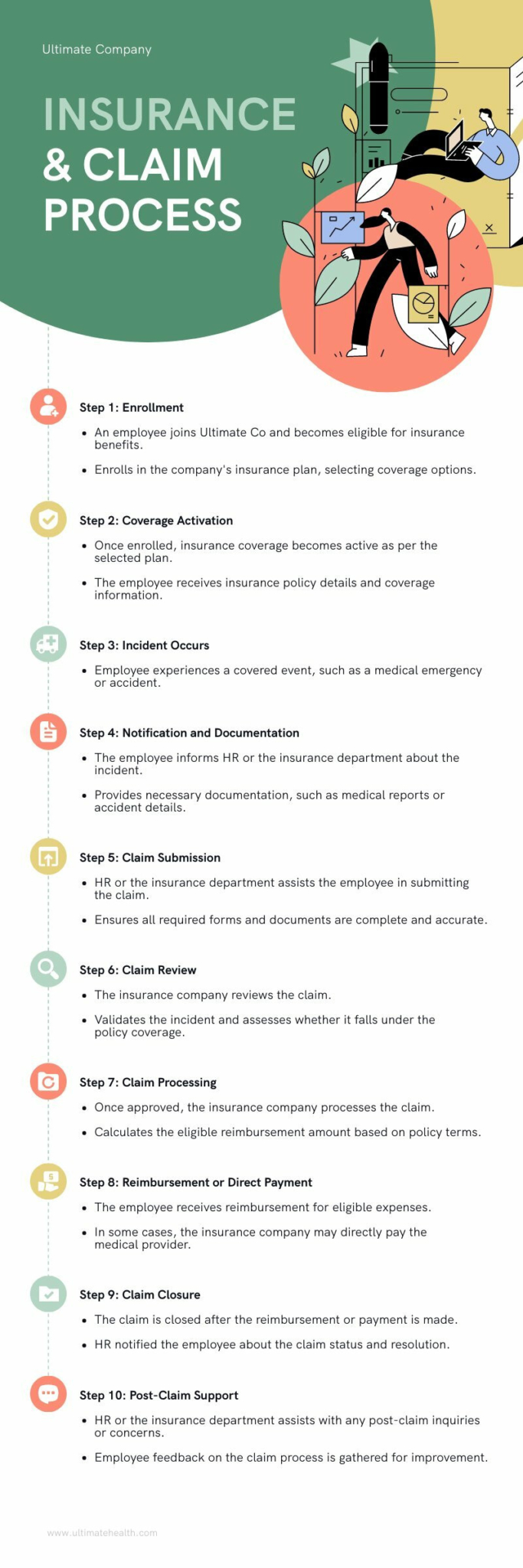 Diagrams
Claim Process
Diagrams
Claim Process
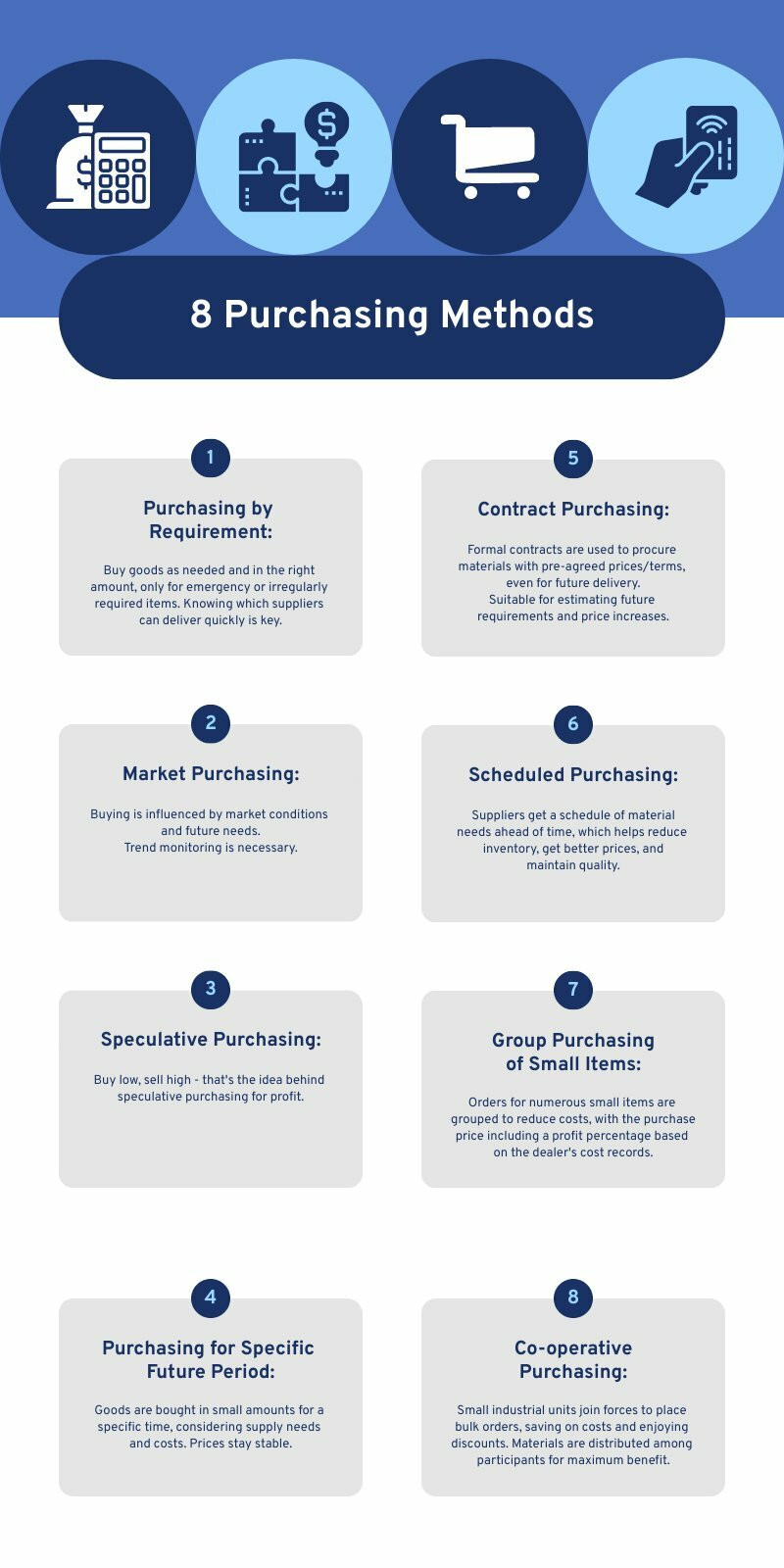 Diagrams
Purchasing Method
Diagrams
Purchasing Method
 Diagrams
Compensation and Benefits
Diagrams
Compensation and Benefits
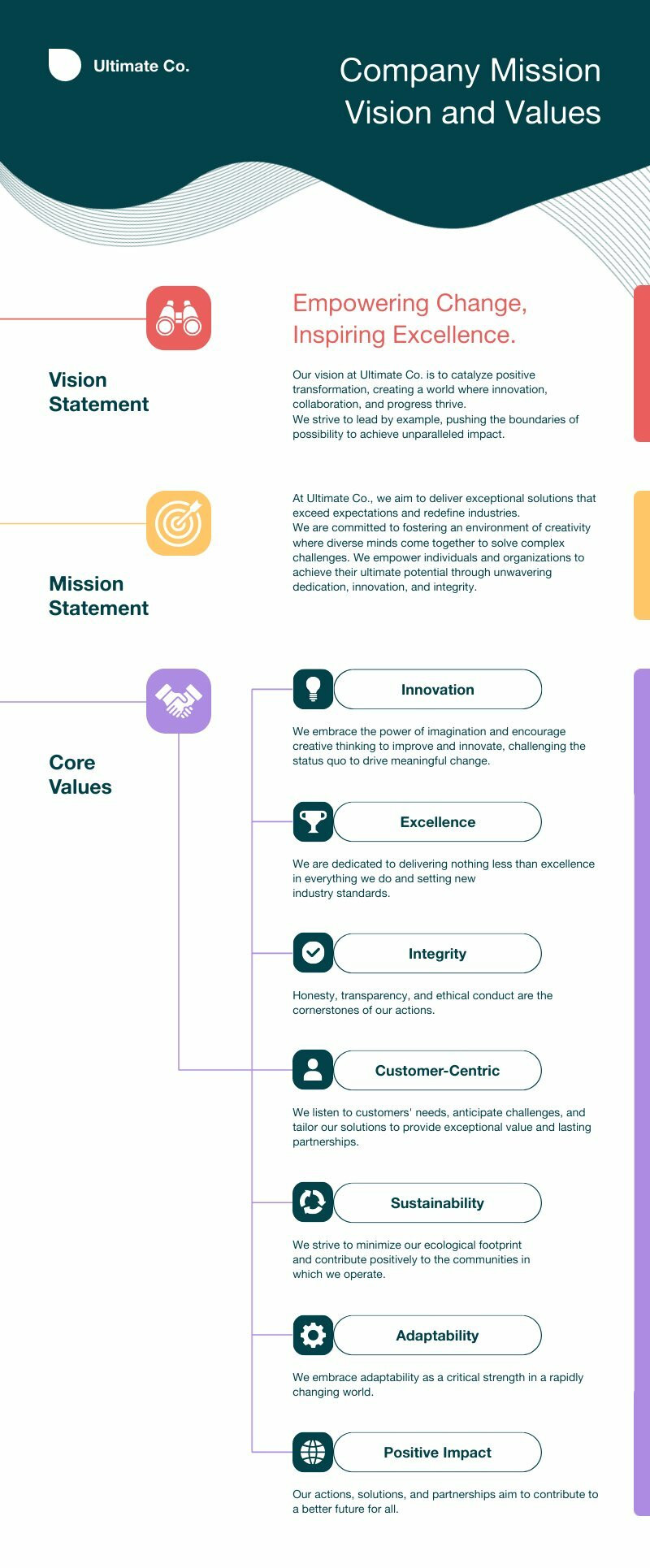 Diagrams
Corporate Values
Diagrams
Corporate Values
 Diagrams
Procurement Cycle
Diagrams
Procurement Cycle
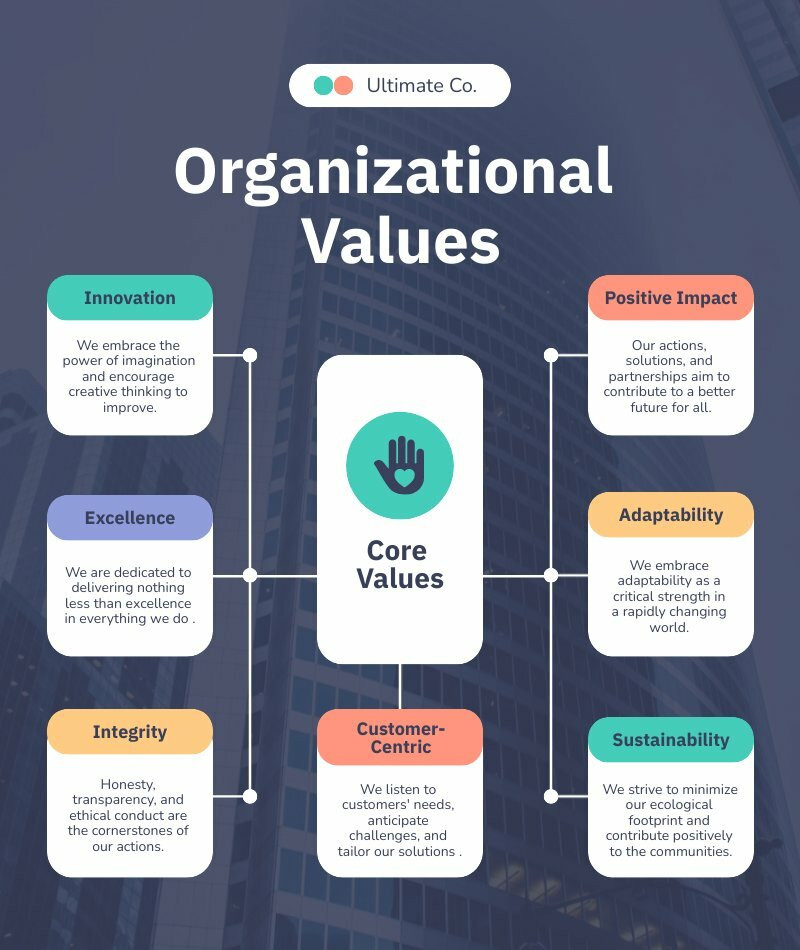 Diagrams
Organizational Values
Diagrams
Organizational Values
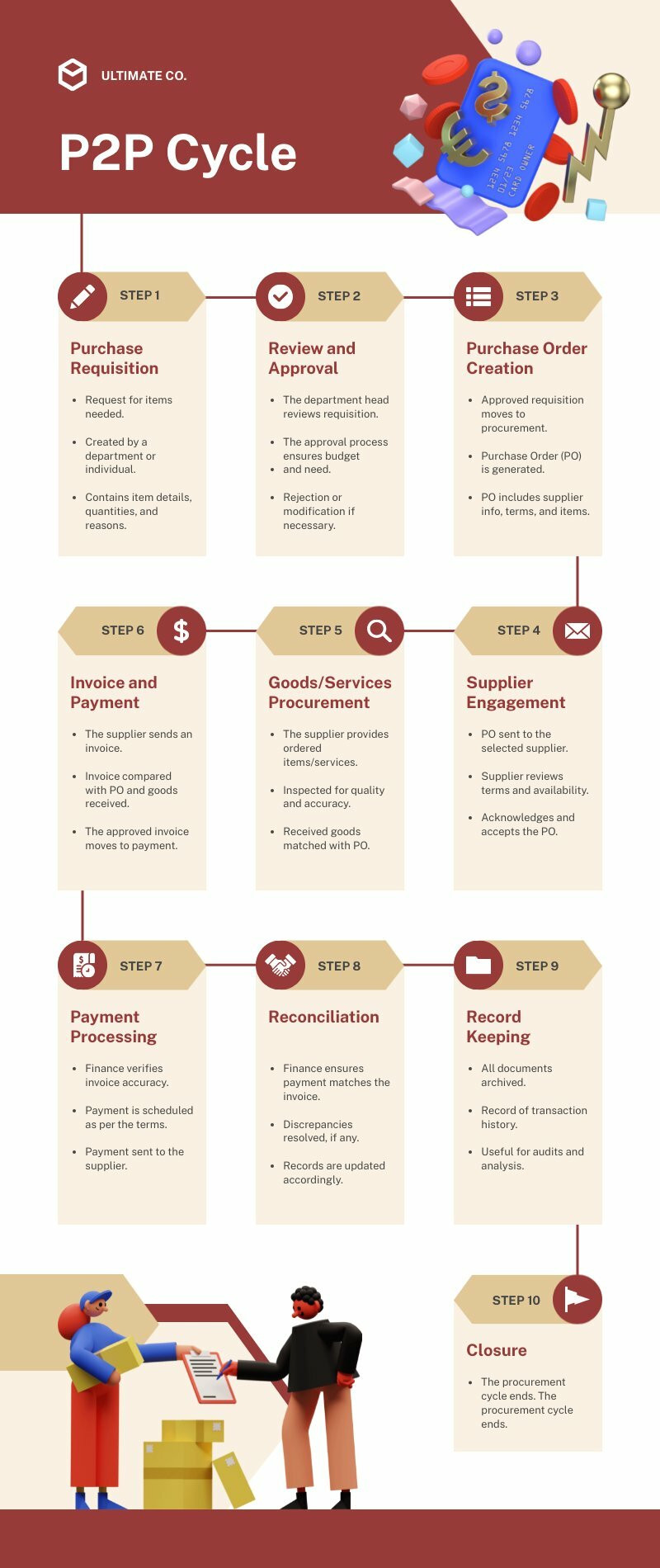 Diagrams
P2P Cycle
Diagrams
P2P Cycle
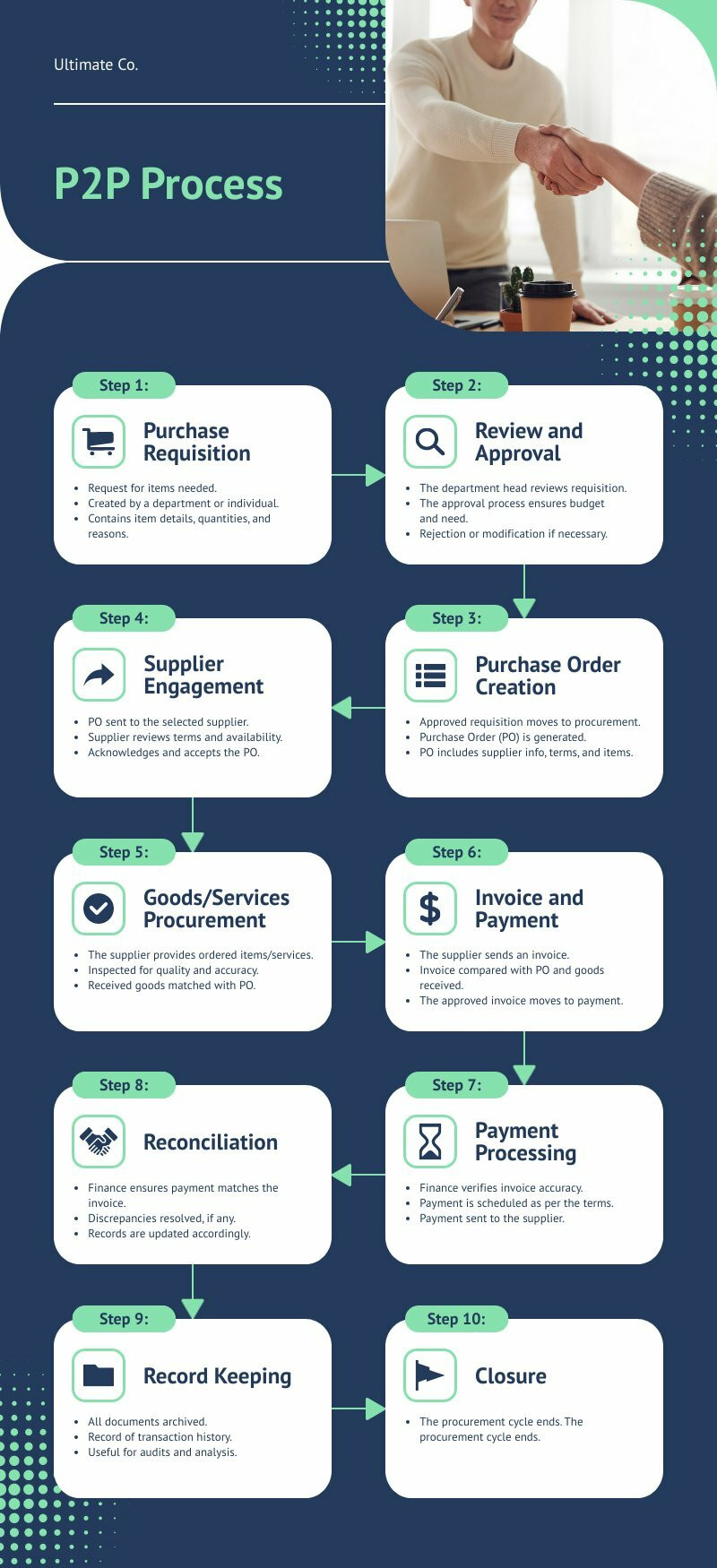 Diagrams
P2P Process
Diagrams
P2P Process
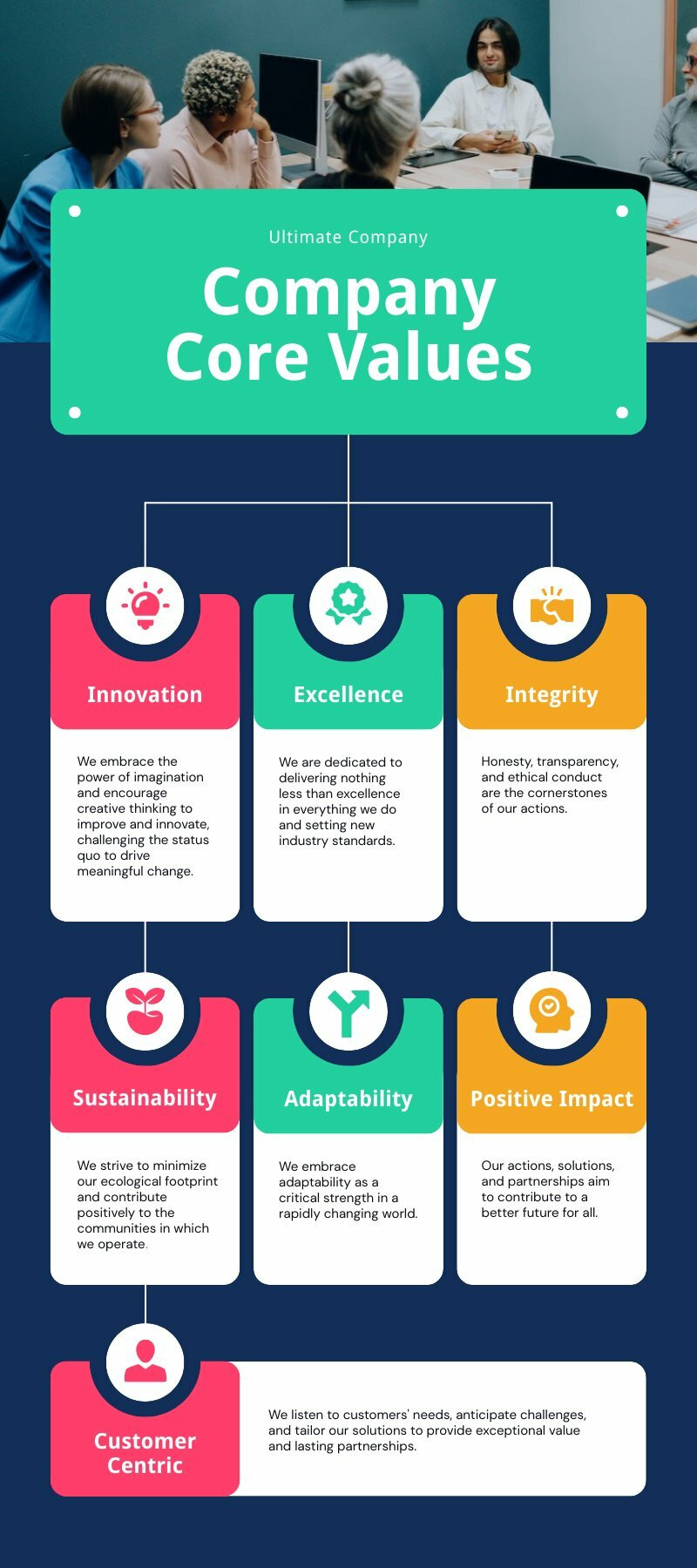 Diagrams
Core Values of a Company
Diagrams
Core Values of a Company
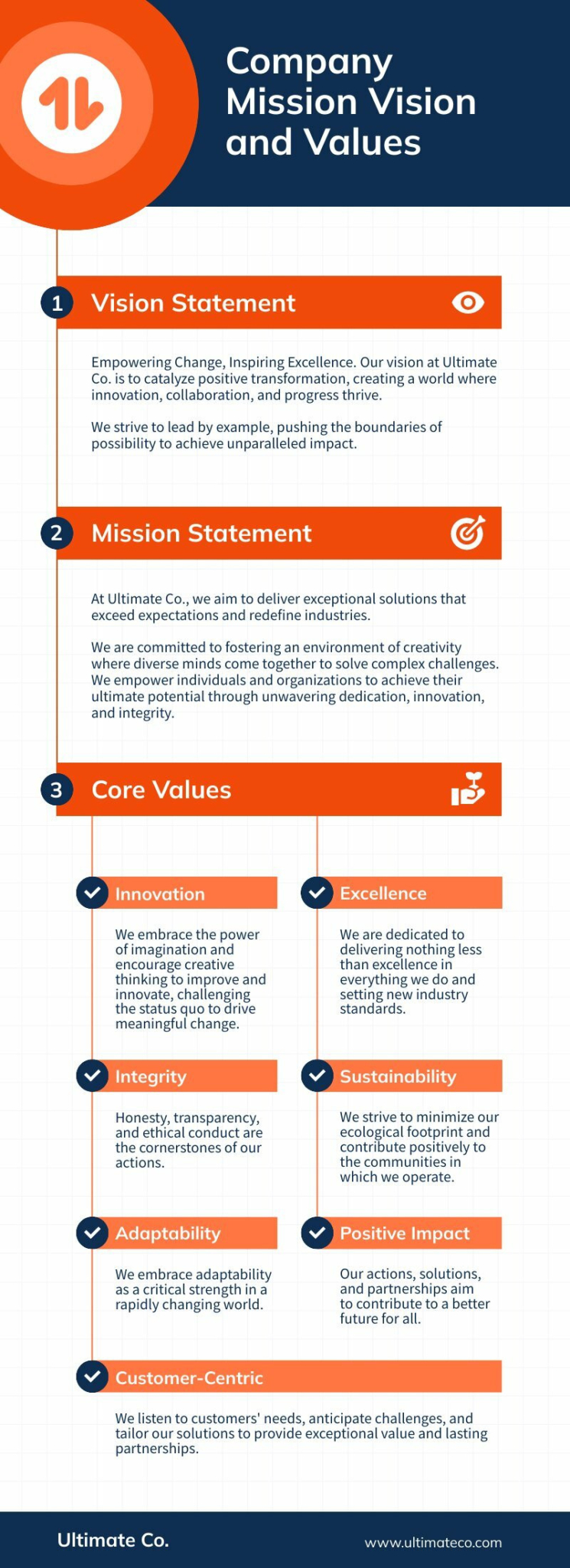 Diagrams
Mission Vision and Core Values
Diagrams
Mission Vision and Core Values